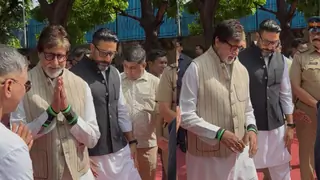| League cricket being an entirely new concept for cricket fans as well as television viewers in India, there was apprehension about its success. But BCCI's financial brain and IPL commissioner Lalit Modi probably didn't have an iota of doubt about IPL's success as he described it as the 'biggest reality show' on TV. Modi has been vindicated. So has been MAX, the channel that holds the rights to broadcast IPL matches. For week 16 (April 13 to 19, 2008), which had only three matches, the average rating was 6.2 for Hindi speaking market (HSM) and the all India average was 5.6. By the end of the week 19, 31 matches were played and the average ratings for all 31 matches were 4.7 (all India) and 5.1 for HSM. While in the opening week, as many as 20 million people watched the first three matches and MAX reached 45.8 million viewers, the cumulative reach of IPL in the subsequent three weeks was 77.5 million, 89 and 92 million respectively. "Cricket continues to be a big property despite a decline in its popularity," says T Gangadhar, MAX's vice president and head of marketing. According to him, people thought IPL wouldn't take off in a big way because ICL was a non-success. "But ICL had several has-been players and was played in one city initially and later at three venues. On the other hand, IPL has several star cricketers, sprinkled all over the eight teams. Besides, IPL is a potent combination of stars, fast cricket, furious strokes, huge sixes, glamour, entertainment and new dynamics like Dhoni Vs Sachin, Ishant Vs Sehwag and Gilchrist Vs Warne," he explains. What is also surprising is the format's resilience to the law of averages. In any long drawn out tourney, interest takes a beating and viewership starts sagging once the initial euphoria is over. However, IPL has maintained momentum and sustained viewers' interest even after three weeks. "There is no doubt that cricket is a mass property. But no cricket tournament in the past has maintained such high level of interest from day one. Eyeballs are still coming in every day and it looks the momentum may continue," says TAM Media Research's corporate communication head Siddhartha Mukherjee. In Mukherjee's view, IPL's success is a result of new packaging and innovative communication. "It has created the right touch points," he adds. One of the main reasons for IPL sustaining viewer's interest, according to Sony's business head Albert Almeida, is that most of the games have been close contests. "It's a great quality format and it has retained viewer's interest because of the way it has been positioned," says Albert. However, despite being a hugely popular property watched by men, women and children, IPL has not had much impact on Hindi GE channels' prime time soaps. The impact is just about 15 to 20 per cent. Four weeks before IPL began, the ratings of Kyunki, Bidaai, Kahani, Dulhan, Saath Phere and Naagin for the Hindi speaking market were 6.53, 5.36, 4.23, 6, 5.40 and 4.56 respectively. The opening episode of Paanchvi Paas which premiered on April 25 notched up 4.6 TVR and the second episode the following day got 3.7 TVR. In week 18 the ratings garnered by Kyunki, Bidaai, Dulhan, Saath Phere, Naagin and Paanchvi Paas for the Hindi speaking market are 4.4, 4.82, 4.54, 3.93, 3.28 and 3.22 respectively. The reason, in Gangadhar's opinion, is GE channels get appointment viewer who watches his favourite soap and switches over to another channel. "I think viewers have negotiated well between their favourite GE shows and IPL," feels Gangadhar. However, if there has not been any significant impact on GE channels, where has the viewer come from? Siddhartha says TAM has not done a report to pinpoint how and from where the migration has happened. Albert says a show-by-show and slot-by-slot study of prime time GE shows will reveal that there has been significant migration of viewers from GE channels to IPL. "Channels have telecast movies and resorted to some stunts to increase their TRPs," he says. According to Gangadhar, if not Hindi GE channels, regional GE channels have been hit badly. "Other losers are news, music and movie channels. But the biggest losers are sports channels which have suffered the most," he says. Since cricket per se already has huge male viewership, the challenge before MAX was in getting the peripheral (read women) and snacking viewers that watch music and movie channels. "That's precisely why we packaged and promoted IPL as the ultimate destination of bigger and best entertainment," says Gangadhar. |



















